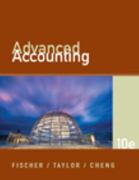Merger Analysis with Terminal values The Aldebron Motor Company is considering acquiring Arcturus Gear Works Inc. and has made a three-year projection of the firm's financial statements, including the following reve- F4 nue and earnings estimate. Period O is the current year and not part of the forecast. All dollar figures are in millions, except per share amounts. Year 0 2 3 Revenue $1,500 $1,650 $1,815 $2,000 Net income 95 106 117 130 Aldebron expects that synergies will net $10 million after tax per year. It also expects that cash equal to depreciation will have to be reinvested to keep Arcturus's plant operating ef- ficiently, and that 60% of the remaining cash generated by operations will need to be invested in growth opportunities. Otherwise, the balance sheet will remain relatively unchanged. Results beyond three years become increasingly difficult to forecast in any detail, so Aldebron's plan simply assumes a 6% annual growth in all of the target's figures after the third year. Currently 90-day Treasury bills are yielding 7% and the market returns 12% on an average stock. Arcturus's beta is 1.8, and the firm has 20 million shares of stock outstanding, which closed at $19 a share yesterday. How much should Aldebron be willing to pay for Arcturus's stock? Discuss the quality of the estimate. SOLUTION: First we'll compute the appropriate discount rate for present value calculations. Recall that the target's return on equity is the appropriate rate. We'll estimate that using the capital asset pricing model (CAPM) approach (see Chapter 9, page 424). The SML yields the following: Kx = KRF + (KM -KRF) bx = 7% + (12% - 7%) 1.8 =16% Next we complete the rough cash flow estimate for the target for the first three years, using the information given. ARCTURUS GEAR WORKS, INC. ESTIMATED CASH FLOWS ($ MILLIONS) Year Revenue 0 2 3 Net income (unmerged) $1,500 Synergies $ $1,650 95 $1,815 $2,000 $ 106 $ 117 $ 130 Net income/cash flow (merged)* 10 $ 105 10 10 10 Reinvested (60%) $ 116 $ 140 Free cash flow to Aldebron (63) $ 127 (84) $ (70 ) 42 $ 46 (76) $ 51 $ 56 "We haven't added back depreciation because of our assumption that cash equal to that amount must be reinvested to maintain the plant. .: .Cash flows after the periods planned in detail are often summarized in a single terminal value assumption. We discussed terminal values in Chapter 11, page 495. In this case, Aldebron is assuming that the last year's flow, $56 million, will grow at 6% per year indefinitely. The value of a known payment that will grow at a known rate can be calculated using the constant growth (Gordon) stock valuation model we studied in Chapter 8 (page 356). Recall Equation 8.10. Do(1 + 9) Po = - k - g In this application, we'll rewrite the equation, replacing Po with the terminal value (TV) we're looking for while Do becomes the year 3 cash flow, which we'll call C3. We've already calcu- lated the discount rate, k, and g is the growth rate assumed after year 3 ($ millions). TV = - C3(1 + 9) _$56(1.06) k - g .16 -.06 = $594 Hence, the cash flow stream in our capita budgeting calculation is as follows ($M): Year 2 3 Operating cash flow $46 $51 $ 56 Terminal value 594 Total $46 $51 $ 650 Notice how large the terminal value is compared to the three annual cash flows. This is not un- usual. Next we'll take the present value of the entire stream at the discount rate we calculated earlier. To make a point later on, we'll keep the three-year forecast and the terminal value cal- culation separate ($ millions). PV = $46[PVF16.1] + $51[PVF16,2] + $56[PVF16,3] + $594[PVF16,3] PV = $46(.8621) + $51(.7432) + $56(.6407) + $594(.6407) PV = $113 + $381 PV = $494 This procedure indicates that Arcturus is worth about $494 million to Aldebron. Notice that approximately three-quarters of this figure comes from the terminal value assumption. In other words, the absolute maximum that Aldebron should consider paying for Arcturus is $494 million, which, if there are 20 million shares outstanding, is $24.70 per share If the stock is currently selling at $19.00, this represents a 30.0% premium over its market price calculated as follows: ($24.70- $19.00)/$19.00 = 30.0% The Quality of the Estimate It's important to understand how arbitrary the valuation process we've just illustrated can be, especially the terminal value calculation. Even though it represents the period about which we know the least (the distant future), the terminal value accounts for fully three quarters of the








